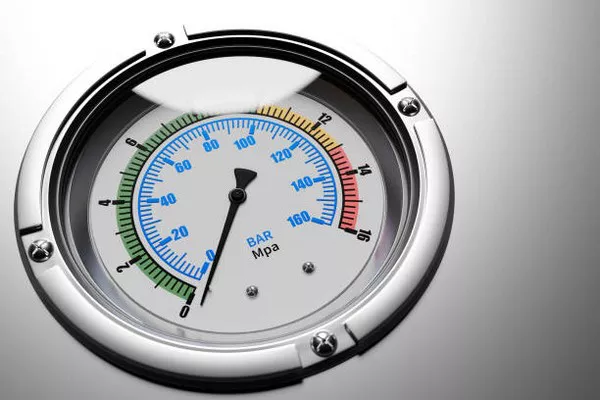Barometers, essential instruments for measuring atmospheric pressure, have been fundamental to scientific discovery and practical applications since their invention in the 17th century. While often associated with weather prediction, the utility of barometers spans various fields, from aviation to healthcare. This article explores ten prominent uses of barometers, shedding light on their diverse applications and enduring relevance.
1. Weather Forecasting
The primary and most well-known use of barometers is in weather forecasting. By measuring atmospheric pressure, barometers help meteorologists predict weather changes. A falling barometer indicates the approach of low-pressure systems, often associated with stormy and wet conditions. Conversely, rising pressure suggests high-pressure systems, which usually bring fair weather. Modern digital barometers are integrated into weather stations and mobile devices, providing real-time data for accurate weather predictions, essential for agriculture, disaster preparedness, and daily life planning.
2. Altitude Measurement
Barometers are crucial in measuring altitude, particularly in aviation. Aircraft use aneroid barometers, known as altimeters, to determine their altitude above sea level. This measurement is vital for ensuring safe flight levels, avoiding obstacles, and maintaining separation between aircraft. Altimeters work by comparing the atmospheric pressure at a given altitude to the standard atmospheric pressure at sea level, allowing pilots to navigate effectively. Hikers and mountaineers also use portable barometers to track altitude changes during their expeditions.
3. Climatology and Environmental Monitoring
In climatology, barometers contribute to long-term environmental monitoring and climate research. By recording atmospheric pressure over extended periods, scientists can study weather patterns, climate changes, and phenomena such as El Niño and La Niña. This data helps in understanding global warming, predicting seasonal changes, and developing climate models. Barometric pressure readings, combined with other meteorological data, form the basis for comprehensive climate studies that inform policy decisions and environmental conservation efforts.
4. Oceanography
Barometers play a significant role in oceanography, particularly in studying sea-level changes and understanding ocean-atmosphere interactions. Atmospheric pressure influences sea level, and variations can indicate phenomena such as storm surges and tsunamis. Barometric data, collected from coastal and marine weather stations, aids in predicting these events and mitigating their impacts. Additionally, barometers are used in marine biology research to study how atmospheric pressure affects marine life and ecosystems.
5. Geophysics and Seismology
In geophysics and seismology, barometers help in detecting and analyzing seismic activities. Changes in atmospheric pressure can precede earthquakes, and sensitive barometric readings can contribute to early warning systems. Barometers are used alongside seismometers to monitor ground movements and atmospheric pressure changes, providing a comprehensive view of tectonic activities. This integration enhances the accuracy of earthquake predictions and helps in disaster preparedness and response strategies.
6. Industrial Applications
Barometers find applications in various industries, particularly those sensitive to atmospheric pressure changes. For instance, in the manufacturing of semiconductors and pharmaceuticals, precise control of pressure conditions is essential for maintaining product quality. Barometers are used to monitor and regulate pressure in cleanrooms and production environments. Additionally, in the oil and gas industry, barometers help in drilling operations by providing pressure data crucial for maintaining well stability and preventing blowouts.
7. Health and Medicine
In healthcare, barometers are used to monitor and study the effects of atmospheric pressure on human health. Changes in barometric pressure can influence conditions such as migraines, arthritis, and cardiovascular diseases. Medical researchers use barometric data to understand these correlations and develop strategies to mitigate adverse health effects. Furthermore, barometers are utilized in hyperbaric and hypobaric chambers for therapeutic treatments, helping patients recover from conditions like decompression sickness and promoting wound healing.
8. Sporting and Recreational Activities
Barometers enhance the safety and experience of various sporting and recreational activities. In aviation sports like paragliding and skydiving, altimeters (barometer-based devices) are crucial for altitude awareness and safe landing. Similarly, in scuba diving, barometers are used to monitor pressure changes underwater, ensuring divers’ safety and preventing decompression sickness. Outdoor enthusiasts, including hikers and campers, use barometers to predict weather changes and make informed decisions during their adventures.
9. Agricultural Management
In agriculture, barometers assist farmers in making weather-dependent decisions. Understanding atmospheric pressure trends helps in predicting rainfall, frost, and other weather conditions critical for crop management. By anticipating adverse weather, farmers can take proactive measures to protect their crops, optimize planting and harvesting schedules, and improve overall yield. Barometric data, integrated into modern agricultural technologies, supports precision farming practices and sustainable agriculture.
10. Scientific Research and Education
Barometers are fundamental tools in scientific research and education. In physics and meteorology, they are used in experiments and practical demonstrations to teach principles of atmospheric pressure and weather prediction. Barometers are also employed in environmental science studies to analyze air pressure patterns and their effects on ecosystems. Educational institutions and research laboratories utilize barometers to foster a deeper understanding of atmospheric sciences and inspire the next generation of scientists and researchers.
See Also HOW DOES A LIQUID BAROMETER WORK
Conclusion
The barometer, an invention dating back to Evangelista Torricelli in 1643, remains a versatile and indispensable instrument across numerous fields. Its applications, from weather forecasting and aviation to healthcare and scientific research, underscore its enduring significance. As technology advances, barometers continue to evolve, offering greater precision and integration with digital systems. Whether predicting storms, measuring altitude, or monitoring environmental changes, barometers are integral to our understanding and interaction with the world around us. Their diverse uses highlight the profound impact of atmospheric pressure measurements on our daily lives and the advancement of various scientific disciplines.

